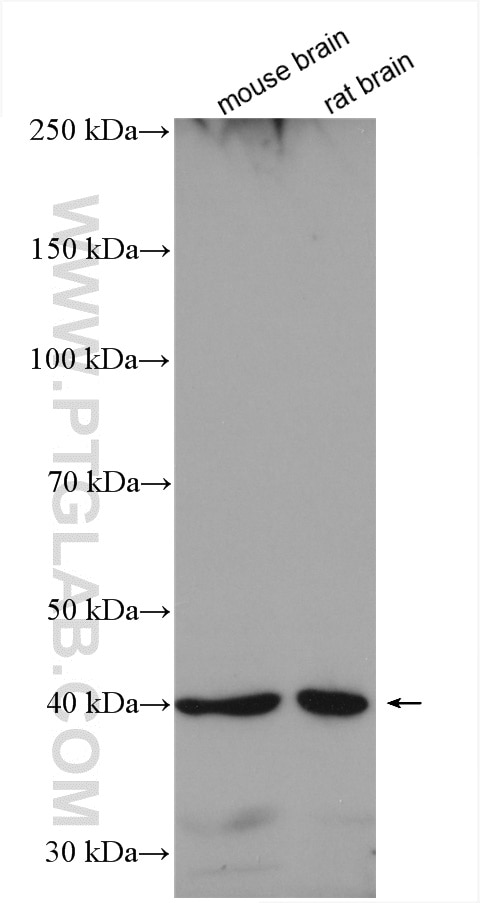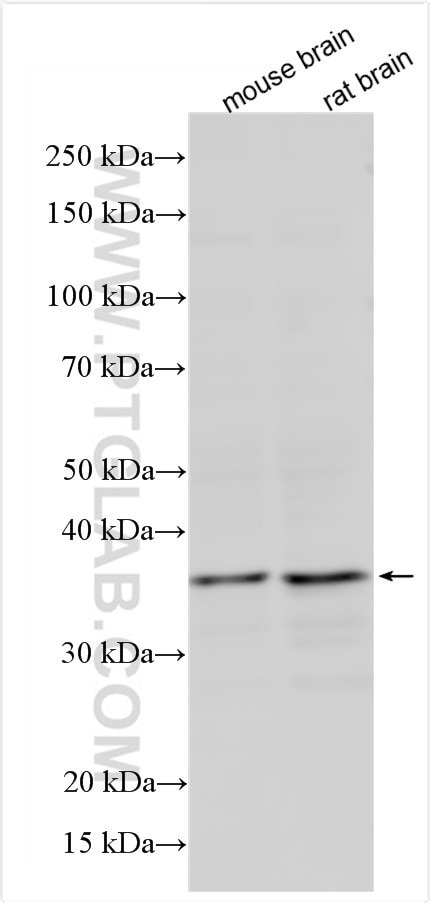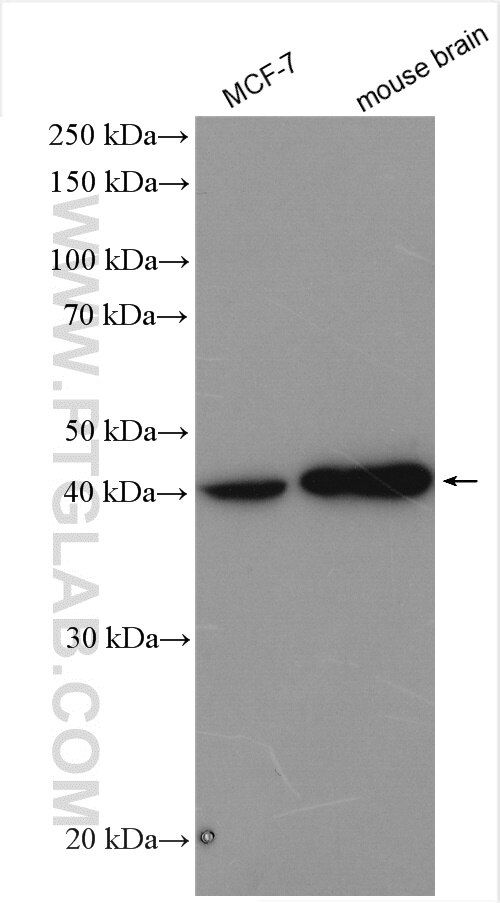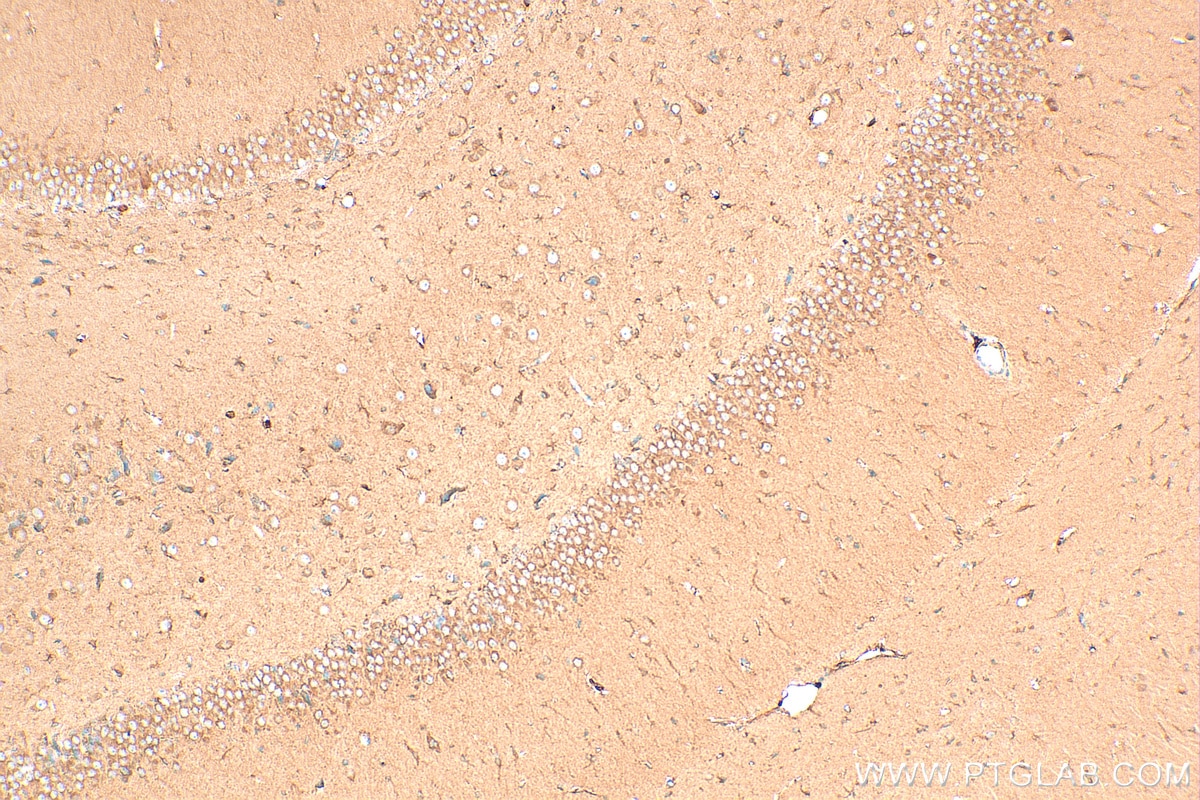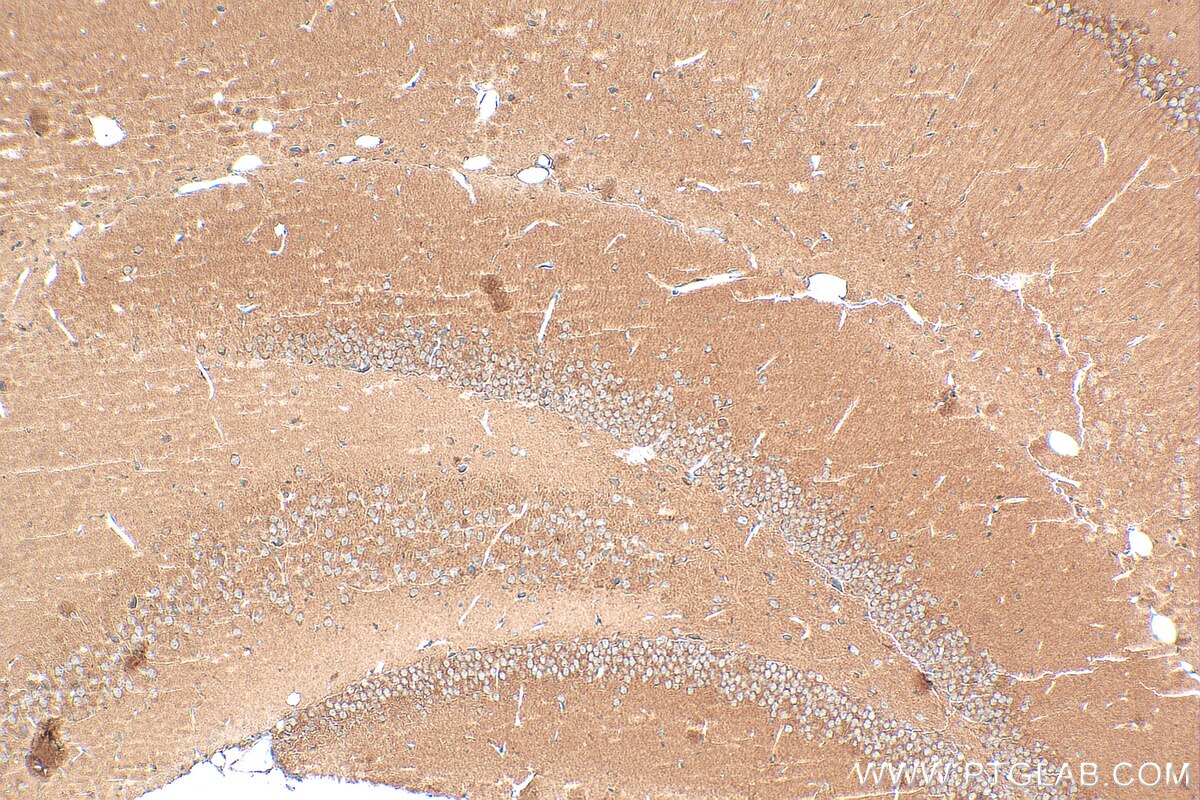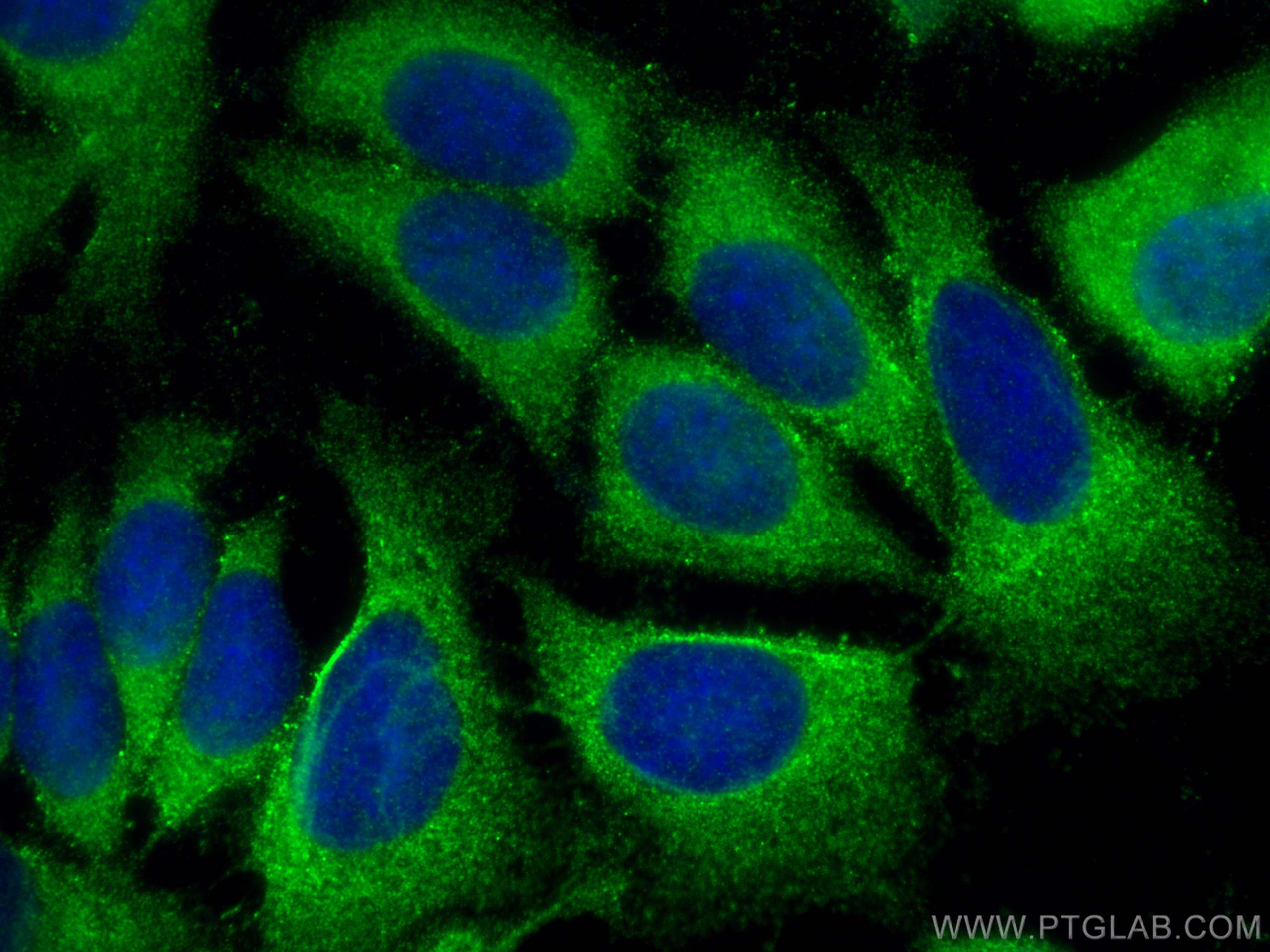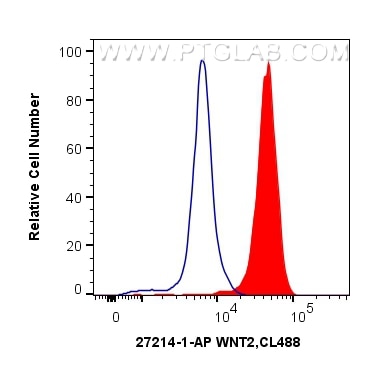- Phare
- Validé par KD/KO
Anticorps Polyclonal de lapin anti-WNT2
WNT2 Polyclonal Antibody for FC, IF, IHC, WB, ELISA
Hôte / Isotype
Lapin / IgG
Réactivité testée
Humain, rat, souris
Applications
WB, IHC, IF, FC, ELISA
Conjugaison
Non conjugué
N° de cat : 27214-1-AP
Synonymes
Galerie de données de validation
Applications testées
| Résultats positifs en WB | tissu cérébral de souris, cellules MCF-7, tissu cérébral de rat |
| Résultats positifs en IHC | tissu cérébral de rat, tissu cérébral de souris il est suggéré de démasquer l'antigène avec un tampon de TE buffer pH 9.0; (*) À défaut, 'le démasquage de l'antigène peut être 'effectué avec un tampon citrate pH 6,0. |
| Résultats positifs en IF | cellules MCF-7, |
| Résultats positifs en cytométrie | cellules Jurkat, |
Dilution recommandée
| Application | Dilution |
|---|---|
| Western Blot (WB) | WB : 1:500-1:1000 |
| Immunohistochimie (IHC) | IHC : 1:50-1:500 |
| Immunofluorescence (IF) | IF : 1:50-1:500 |
| Flow Cytometry (FC) | FC : 0.40 ug per 10^6 cells in a 100 µl suspension |
| It is recommended that this reagent should be titrated in each testing system to obtain optimal results. | |
| Sample-dependent, check data in validation data gallery | |
Applications publiées
| KD/KO | See 1 publications below |
| WB | See 8 publications below |
| IF | See 1 publications below |
Informations sur le produit
27214-1-AP cible WNT2 dans les applications de WB, IHC, IF, FC, ELISA et montre une réactivité avec des échantillons Humain, rat, souris
| Réactivité | Humain, rat, souris |
| Réactivité citée | rat, Humain, souris |
| Hôte / Isotype | Lapin / IgG |
| Clonalité | Polyclonal |
| Type | Anticorps |
| Immunogène | WNT2 Protéine recombinante Ag25845 |
| Nom complet | wingless-type MMTV integration site family member 2 |
| Masse moléculaire calculée | 40 kDa |
| Poids moléculaire observé | 40 kDa, 34 kDa |
| Numéro d’acquisition GenBank | BC029854 |
| Symbole du gène | WNT2 |
| Identification du gène (NCBI) | 7472 |
| Conjugaison | Non conjugué |
| Forme | Liquide |
| Méthode de purification | Purification par affinité contre l'antigène |
| Tampon de stockage | PBS avec azoture de sodium à 0,02 % et glycérol à 50 % pH 7,3 |
| Conditions de stockage | Stocker à -20°C. Stable pendant un an après l'expédition. L'aliquotage n'est pas nécessaire pour le stockage à -20oC Les 20ul contiennent 0,1% de BSA. |
Informations générales
Wnt2 is a secreted glycoprotein that is one of the canonical Wnt ligands. The WNT gene family consists of structurally related genes which encode secreted signaling proteins. These proteins have been implicated in oncogenesis and in several developmental processes, including regulation of cell fate and patterning during embryogenesis. Wnt2 is known to directly regulate β-catenin activity, the key player in proliferation and inflammation. Recently, studies have demonstrated that Wnt2 is overexpressed in various human cancers, including esophageal, gastric, colorectal, breast, lung, cervical, and malignant glioma.
Protocole
| Product Specific Protocols | |
|---|---|
| WB protocol for WNT2 antibody 27214-1-AP | Download protocol |
| IHC protocol for WNT2 antibody 27214-1-AP | Download protocol |
| IF protocol for WNT2 antibody 27214-1-AP | Download protocol |
| Standard Protocols | |
|---|---|
| Click here to view our Standard Protocols |
Publications
| Species | Application | Title |
|---|---|---|
Clin Transl Med Ursodesoxycholic acid alleviates liver fibrosis via proregeneration by activation of the ID1-WNT2/HGF signaling pathway. | ||
Aging (Albany NY) LncRNA-HAGLR motivates triple negative breast cancer progression by regulation of WNT2 via sponging miR-335-3p. | ||
FASEB J Bisphenol A exposure alters placentation and causes preeclampsia-like features in pregnant mice involved in reprogramming of DNA methylation of WNT2. | ||
Phytother Res Capsaicin suppressed activity of prostate cancer stem cells by inhibition of Wnt/β-catenin pathway. | ||
Brain Res Bull Excess folic acid supplementation before and during pregnancy and lactation activates β-catenin in the brain of male mouse offspring. | ||
Cancer Med Mycoplasma hyorhinis infection promotes gastric cancer cell motility via β-catenin signaling.
|
